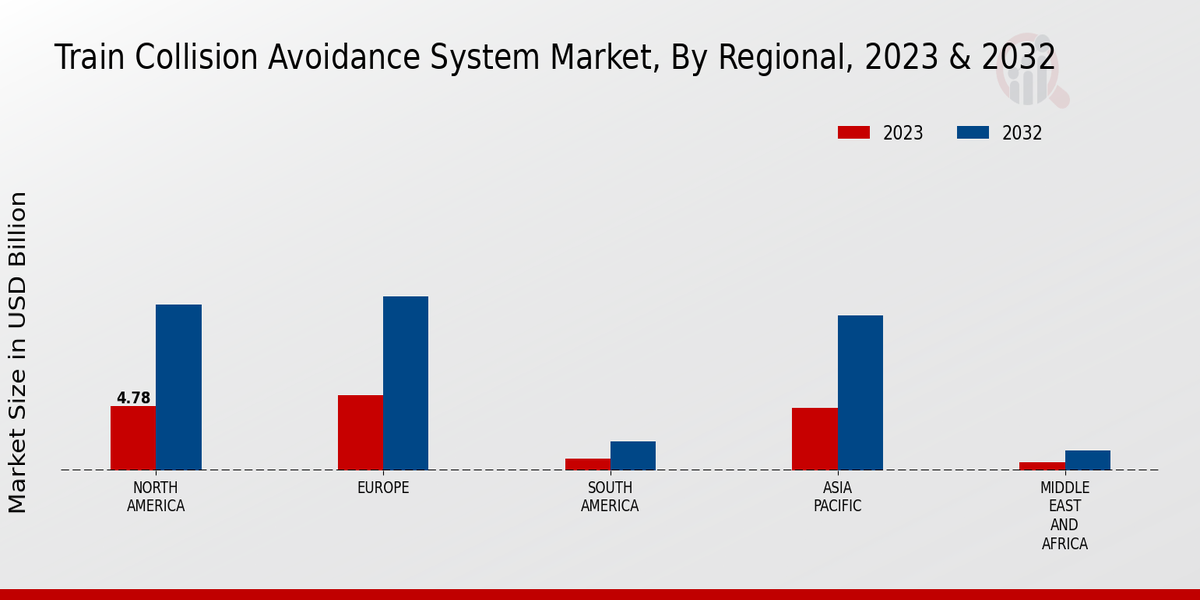Train Collision Avoidance System Market Summary
The Global Train Collision Avoidance System Market is projected to grow from 20.12 USD Billion in 2024 to 60.65 USD Billion by 2035.
Key Market Trends & Highlights
Train Collision Avoidance System Key Trends and Highlights
- The market is expected to experience a compound annual growth rate (CAGR) of 10.72 percent from 2025 to 2035.
- By 2035, the market valuation is anticipated to reach 54.9 USD Billion, indicating robust growth potential.
- in 2024, the market is valued at 20.12 USD Billion, reflecting a strong foundation for future expansion.
- Growing adoption of advanced safety technologies due to increasing regulatory requirements is a major market driver.
Market Size & Forecast
| 2024 Market Size | 20.12 (USD Billion) |
| 2035 Market Size | 60.65 (USD Billion) |
| CAGR (2025-2035) | 10.55% |
Major Players
Wabtec Corporation, Siemens Mobility, Mitsubishi Electric Corporation, Bombardier Transportation, Toshiba Corporation, Thales Group, Huawei Technologies, CAF Group, Alstom, Ansaldo STS, Kawasaki Heavy Industries, Hitachi Rail, ZTE Corporation
















Leave a Comment